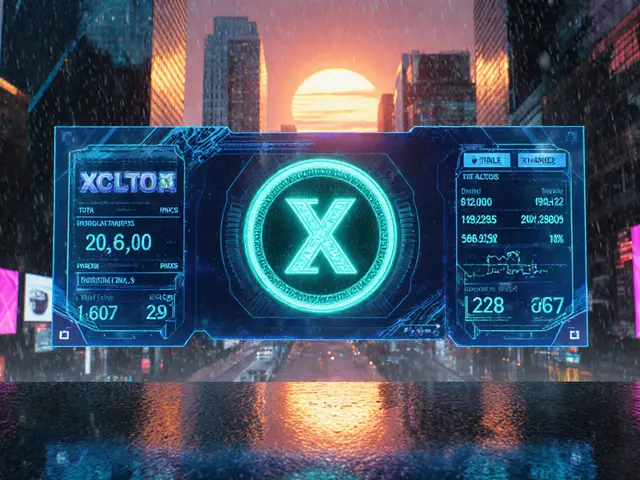Mempool Priority Simulator
Fee-Based Priority
Higher fees increase the likelihood of inclusion in the next block.
Transaction Size Impact
Large transactions take more space and may reduce priority despite high fees.
Nonce Order
Out-of-order nonces block subsequent transactions regardless of fee.
Mempool Visualization
Transactions sorted by fee rate. Higher fee transactions appear at the top.
Explanation:
- Red bars represent low-priority transactions
- Yellow bars represent medium-priority transactions
- Green bars represent high-priority transactions
- Bars are positioned based on fee rate and size
Transaction Priority Factors
Miners prioritize transactions based on:
- Fee Rate: Directly influences transaction inclusion order
- Transaction Size: Larger transactions consume more block space
- Nonce Order: Out-of-sequence nonces block later transactions
- Age: Older transactions may receive a small boost
- Network Congestion: During high demand, fee differences matter more
When you hit “send” in a crypto wallet, the transaction doesn’t land on the blockchain instantly. It first hangs out in a waiting room called the mempool, where miners decide whether it earns a spot in the next block. Understanding how that decision is made can save you time, money, and frustration, especially during traffic jams.
What Is the Mempool?
Mempool is a temporary storage area on each node that holds unconfirmed transactions until a miner or validator includes them in a block. Think of it as a digital post office sorting letters before they’re delivered. Every node maintains its own copy, so the pool size can vary from one corner of the network to another, but the overall picture stays consistent because transactions quickly propagate across peers.
How a Transaction Enters the Mempool
Before a transaction even reaches the pool, the node runs a series of checks:
- Balance verification - the sender must have enough crypto to cover the amount plus the fee.
- Signature validation - cryptographic proof that the sender authorized the move.
- Nonce sequencing - each account’s transactions are numbered; a missing nonce stalls later ones.
Once these hurdles are cleared, the transaction is broadcast to peers and lands in their mempools. If any check fails, the node drops the transaction and sends an error back to the wallet.
Fee‑Based Prioritization: The Core Incentive
Miners earn two things: a block reward (which shrinks over time) and the Transaction Fee (the amount users pay to have their transaction processed). As the block reward falls, fees become the dominant revenue stream. Consequently, miners sort the mempool by fee rate - usually measured in satoshis per byte for Bitcoin or gwei per gas unit for Ethereum - and pick the highest‑paying transactions first.
Because each block has a size limit (1MB for Bitcoin, ~2MB for Ethereum’s block gas limit), a higher fee gives a transaction a better chance of fitting into the next block, especially when the pool is full.
Beyond Fees: Other Selection Criteria
While fees are king, miners also weigh a few secondary factors:
- Transaction size and complexity: Large scripts or many inputs/outputs consume more block space, reducing the number of transactions a miner can pack in.
- Age: Some miners give a small boost to older transactions that have been waiting without being outbid.
- Nonce order: If a transaction’s nonce is out of sequence, it must sit until the missing one arrives, regardless of its fee.
These nuances explain why a high‑fee transaction might still wait if it’s unusually large or part of a broken nonce chain.

Network Congestion and Its Effects
During price spikes, DeFi mania, or popular NFT drops, the number of pending transactions can surge dramatically. The mempool fills up, and the competition for block space intensifies. Users offering low fees may see confirmation times stretch from minutes to hours, or even days in extreme cases.
Imagine the mempool as an airport runway. When traffic is light, any plane can land quickly. When the runway is busy, only the fastest‑approaching aircraft (those paying the highest landing fees) get priority.
Miner Decision Process in Practice
Here’s a typical workflow a miner follows when constructing a block:
- Grab the current mempool snapshot.
- Sort transactions by fee rate descending.
- Iterate through the list, adding each transaction if it fits within the block’s size limit and passes validation.
- Apply secondary heuristics (size, age, nonce) to break ties or discard low‑value outliers.
- Seal the block, broadcast, and remove the included transactions from the mempool.
Because each miner runs this algorithm independently, the exact composition of a block can vary from one miner to another, leading to slight differences in which transactions confirm first.
Strategies for Users: Getting Your Transaction Confirmed Faster
If you’re not in a hurry, setting a low or “economy” fee can save money when the network is calm. But during congestion, consider these tricks:
- Use the wallet’s fee estimator - most modern wallets query recent blocks to suggest a fee that gives a target confirmation time.
- Increase the fee slightly above the current median to jump the queue.
- Avoid overly large transactions. Consolidate inputs when possible to reduce byte size.
- Watch the Network Congestion metric (often displayed as mempool size or fee market heat map) on block explorers before sending.
- For Ethereum, consider using the “EIP‑1559” fee model, which splits the fee into a base fee (burned) and a tip (paid to miners). Raising the tip can speed up inclusion.
Future Directions: Improving Mempool Efficiency
Developers are experimenting with new mechanisms to make the waiting room less chaotic:
- Fee markets with dynamic pricing: Protocols like Bitcoin Cash employ “replace‑by‑fee” (RBF) to let users bump fees after broadcast.
- Priority gas auctions in Ethereum aim to match users with the highest‑paying validators more transparently.
- Layer‑2 solutions (e.g., Lightning Network, Optimistic Rollups) move many transactions off‑chain, reducing mempool pressure on the base layer.
Understanding the current mempool mechanics remains valuable, though, because even with scaling solutions, some transactions will always settle on the main chain.
Comparison of Key Selection Factors
| Factor | Impact on Priority | Typical Weight |
|---|---|---|
| Fee Rate | Directly determines order - higher fee = earlier selection | High |
| Transaction Size | Large transactions consume more block space, lowering effective priority | Medium |
| Nonce Order | Out‑of‑sequence nonces block subsequent transactions regardless of fee | Critical for same‑address bundles |
| Age (Waiting Time) | Older low‑fee transactions may get a small boost if miners implement age‑based heuristics | Low |
| Network Congestion Level | During spikes, the fee ceiling rises, making fee differences more decisive | Context‑dependent |

Frequently Asked Questions
What exactly happens to a transaction after it leaves the mempool?
Once a miner includes the transaction in a newly sealed block, the block is broadcast to the network. Every node validates the block, updates its ledger, and removes the transaction from its mempool, making it permanently recorded on the blockchain.
Can I replace a transaction that’s already in the mempool with a higher fee?
Yes, if the original transaction signaled RBF (replace‑by‑fee) support. You resend the same transaction with a higher fee, and nodes will discard the lower‑fee version in favor of the new one.
Why do some transactions with high fees still get stuck?
If the transaction is large, contains many inputs, or has an out‑of‑order nonce, miners may skip it even with a good fee. The transaction effectively blocks the queue for its address until the missing nonce arrives.
How can I estimate the right fee before sending?
Modern wallets pull recent block data to suggest a fee that targets a specific confirmation time (e.g., fast, average, slow). You can also check live mempool charts on block explorers to see the current median fee.
Do all blockchain networks use the same mempool rules?
No. Bitcoin, Ethereum, and newer L1s each have their own fee models, block size limits, and optional policies like RBF. While the core idea of a waiting pool is common, the exact prioritization algorithm varies.





Comments
22 Comments
Cynthia Rice
Mempool feels like a crowded freeway at rush hour, and my transaction is stuck in traffic.
Shaian Rawlins
I love how the mempool visual shows those little bars growing like tiny skyscrapers, each one screaming for attention. When the network gets busy, you can actually see the colors shift from red to green as fees rise. It’s a great reminder to check the fee estimator before you hit send, especially if you’re not in a hurry. Consolidating inputs can also shrink your transaction size, making it more appealing to miners. Watching the live chart feels like a mini‑stock ticker for crypto payments.
Miranda Co
If you think a higher fee always guarantees instant inclusion, you’re dreaming. Miners still have to fit your transaction into a limited block, and a gigantic transaction can still be passed over. Out‑of‑order nonces are another silent killer that stalls everything. So don’t just crank up the sat‑per‑byte and expect miracles.
mukesh chy
Oh sure, just crank the fee and the network will magically obey – as if miners are waiting around for us to throw money at them like a charity. Reality check: the mempool is a ruthless marketplace, not a charity fundraiser. Your extra sat‑per‑byte might get you a spot, but only if the transaction isn’t a whale of a size or stuck behind a nonce cliff.
Amal Al.
Exactly! Keep your fee competitive, trim down the transaction size wherever possible, and always double‑check that your nonce sequence is intact!!! A tidy transaction with a healthy tip usually slides right past the congestion bottleneck!!!
Matt Nguyen
Some say the mempool is a transparent queue, but what if the miners are secretly colluding to prioritize certain addresses? Hidden algorithms could be favoring big‑ballers while regular users get stuck. It’s not just economics; there might be undisclosed power plays shaping which TXs make it into blocks.
Taylor Gibbs
Even if conspiracies sound wild, the core rule stays: miners pick the highest fee‑per‑byte that fits the block. The software just follows that incentive, so the best you can do is make your transaction as fee‑efficient as possible.
Amy Harrison
👍 Keep an eye on the mempool heat map, bump that tip a little above the median, and you’ll be sailing into the next block in no time!
Lurline Wiese
The drama of waiting for a confirmation is like watching a suspense thriller where every second feels like an eternity. One minute you’re hopeful, the next you’re staring at a stubborn blue bar refusing to move. It’s pure crypto heartbreak.
Jenise Williams-Green
Honestly, if you keep paying peanuts while demanding lightning‑fast results, you’re the villain of your own story. The blockchain isn’t a vending machine that spits out confirmations on demand for free.
Kortney Williams
The mempool is a living illustration of supply and demand, where each transaction vies for scarce block space. Its ever‑shifting nature forces us to balance cost against urgency.
Jim Griffiths
Use the wallet’s fee estimator and keep your transaction under 250 bytes for better odds.
Bhagwat Sen
Exactly! And if you’re feeling bold, try RBF to bump the fee after you broadcast – it’s like giving your transaction a second wind.
Cathy Ruff
Low fees are for those who enjoy watching their TX crawl forever.
Marc Addington
Only true patriots prioritize their own coins, not some anonymous global pool.
Scott McReynolds
When you send a transaction, it first lands in the mempool, a chaotic waiting room where miners silently scan for the most profitable offers.
Each miner runs its own algorithm, but the core rule across all major chains is simple: higher fee per byte tends to win the race.
This creates a market dynamic resembling an auction, where users constantly adjust their bids to outmaneuver the competition.
During periods of low network activity, even modest fees can secure quick inclusion, because the mempool is relatively empty.
Conversely, when the market spikes-think DeFi summer or a hot NFT drop-the mempool swells and only the top‑tier fees break through.
Large transactions also suffer because they occupy more block space, effectively lowering their fee‑per‑byte efficiency.
Nonce ordering adds another layer of complexity; a single out‑of‑sequence transaction can hold up an entire batch from the same address.
Miner software often incorporates tie‑breakers such as transaction age or size, giving older, smaller entries a slight edge.
Some miners even experiment with custom heuristics, preferring transactions that include certain smart‑contract interactions.
The rise of replace‑by‑fee (RBF) has given users a tool to bump their fee after broadcasting, adding more fluidity to the market.
However, not all wallets or nodes support RBF, so a mis‑priced transaction can linger for hours.
On Ethereum, the EIP‑1559 model splits the fee into a base fee that gets burned and a tip that goes to miners, shifting how users strategize.
Understanding the base fee trends on block explorers can help you set a tip that lands you in the next block without overpaying.
Layer‑2 solutions like rollups and the Lightning Network aim to offload traffic, but the base layer will always need occasional settlement.
Therefore, mastering mempool dynamics remains essential for anyone who wants reliable, cost‑effective confirmations on any blockchain.
Twinkle Shop
The preceding analysis captures the essential economics while layering in technical nuances like EIP‑1559 and RBF. From a developer’s standpoint, integrating real‑time fee APIs can automate optimal tip selection, reducing manual guesswork. Moreover, leveraging mempool data feeds enables adaptive fee strategies that respond to congestion spikes in near‑real time. This synergy between on‑chain metrics and client‑side heuristics is where the next wave of user‑friendly wallets will emerge.
Greer Pitts
Yo fam, the mempool’s like a party line-if you don’t bring enough snacks (fees), you’re stuck outside!
Laurie Kathiari
Honestly, watching low‑ball fees wobble around the mempool is pure entertainment-like a reality TV show where nobody wins.
Natalie Rawley
Everyone pretends they understand mempool mechanics until they actually have to set a fee during a sudden market surge.
Alex Gatti
Stay calm, check the current median fee on a block explorer, and bump your tip a little-no need to panic.
John Corey Turner
In the grand tapestry of decentralized ledgers, the mempool serves as the loom where each transaction thread is woven into the fabric of consensus, reminding us that patience and proper pricing are virtues as timeless as the cryptographic proof itself.
Write a comment